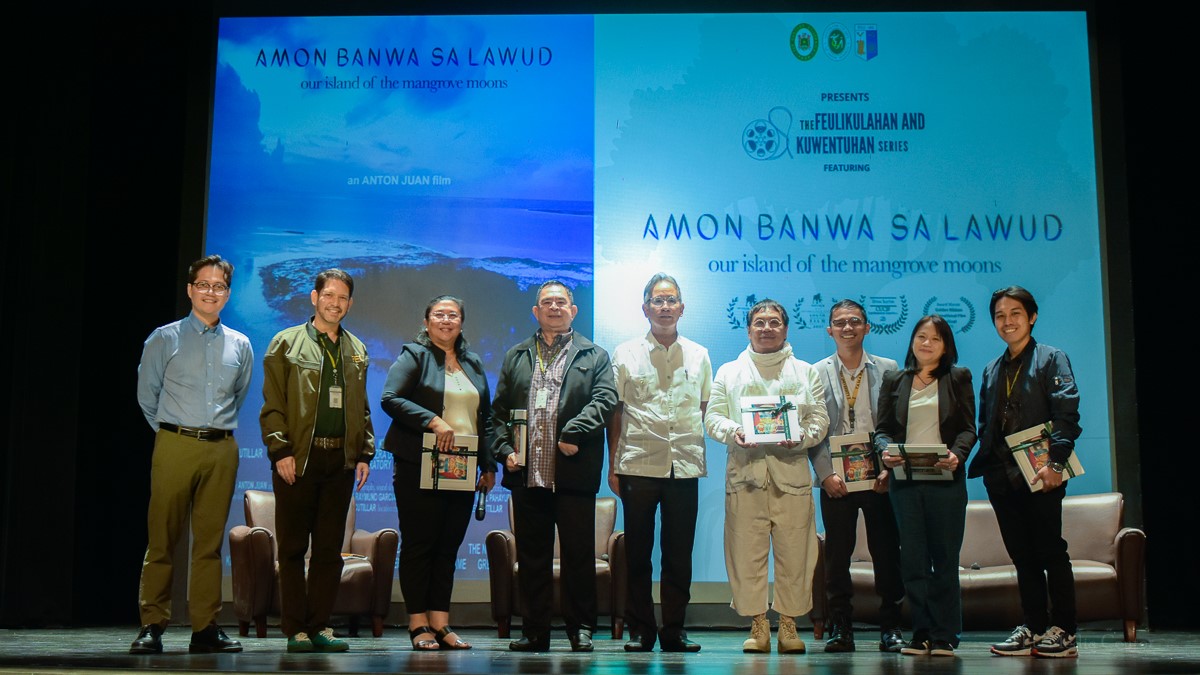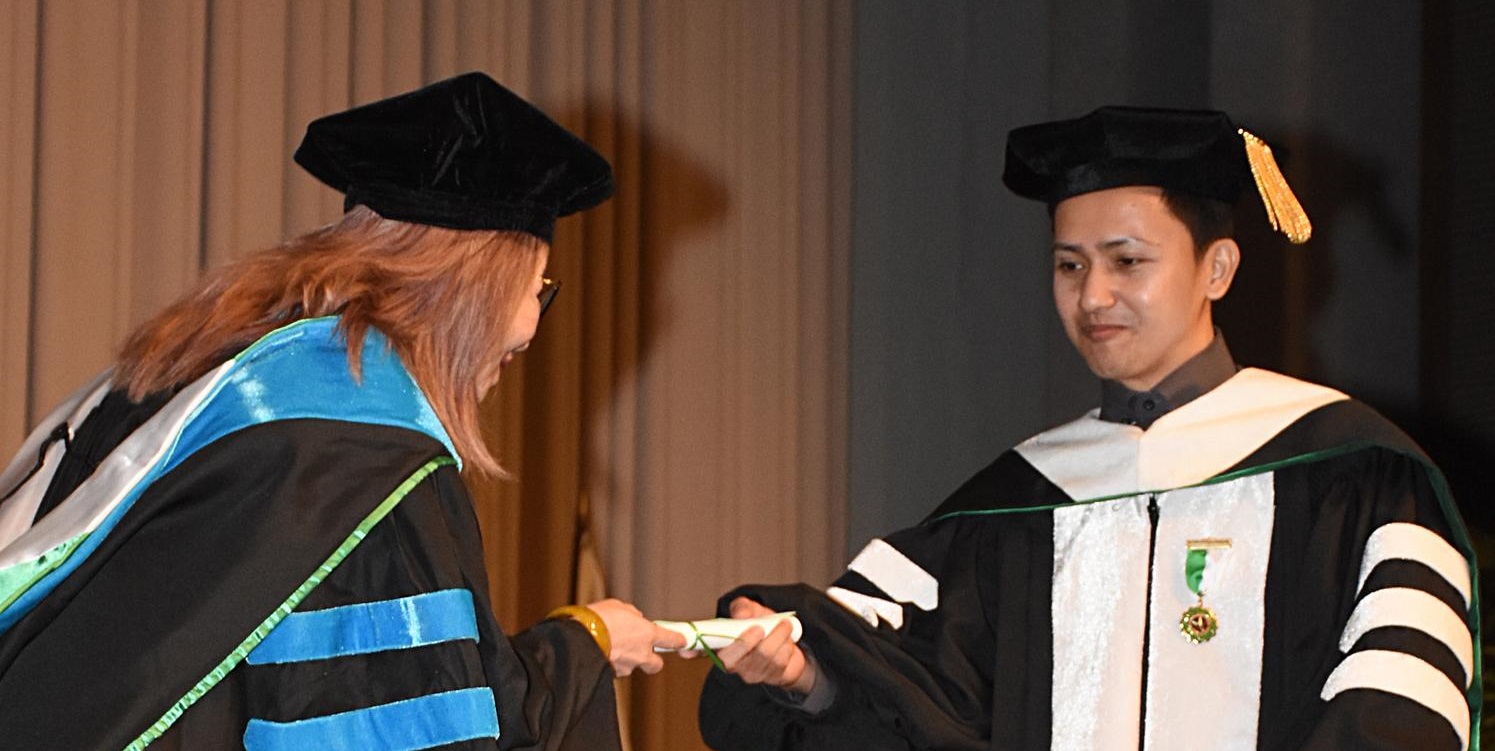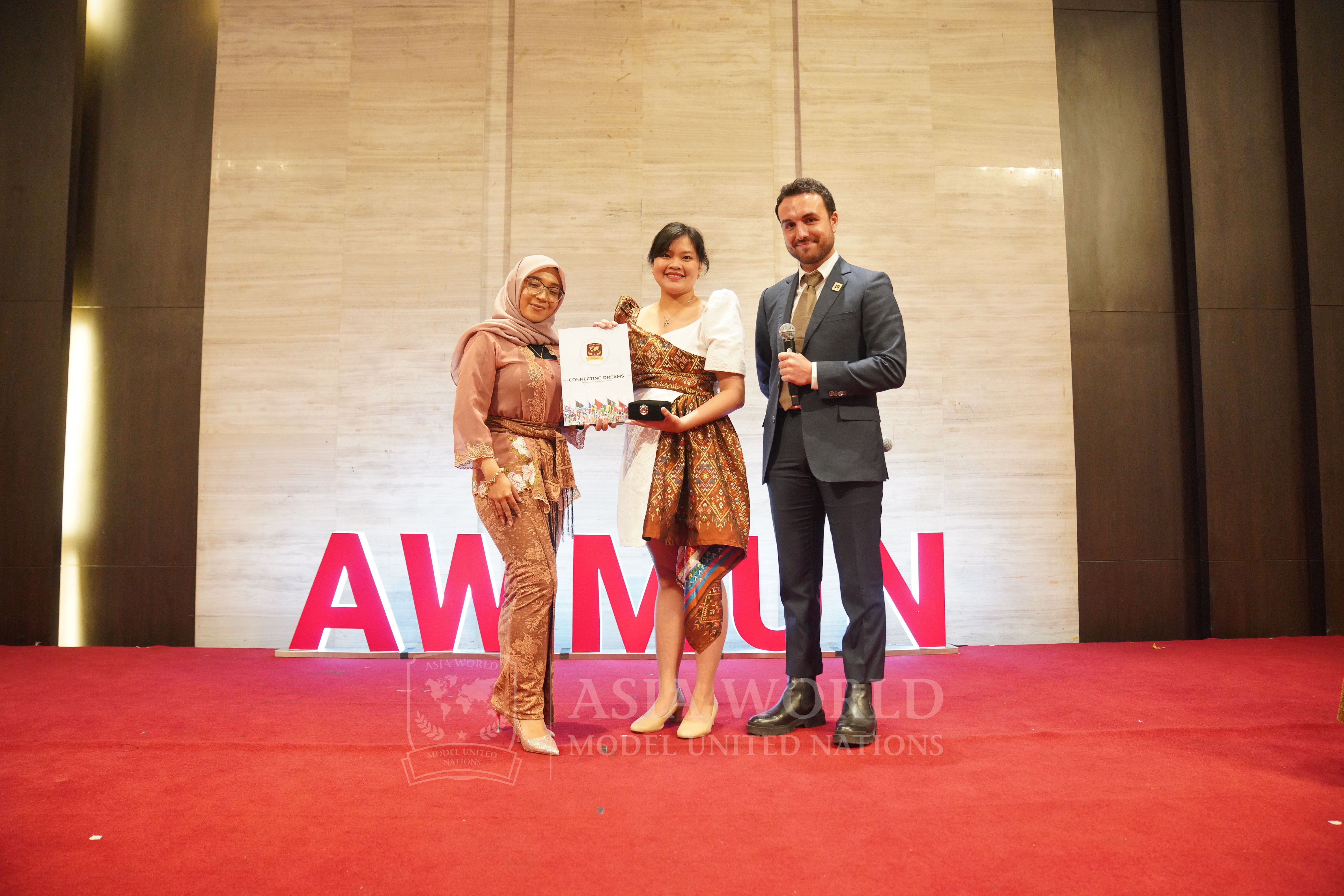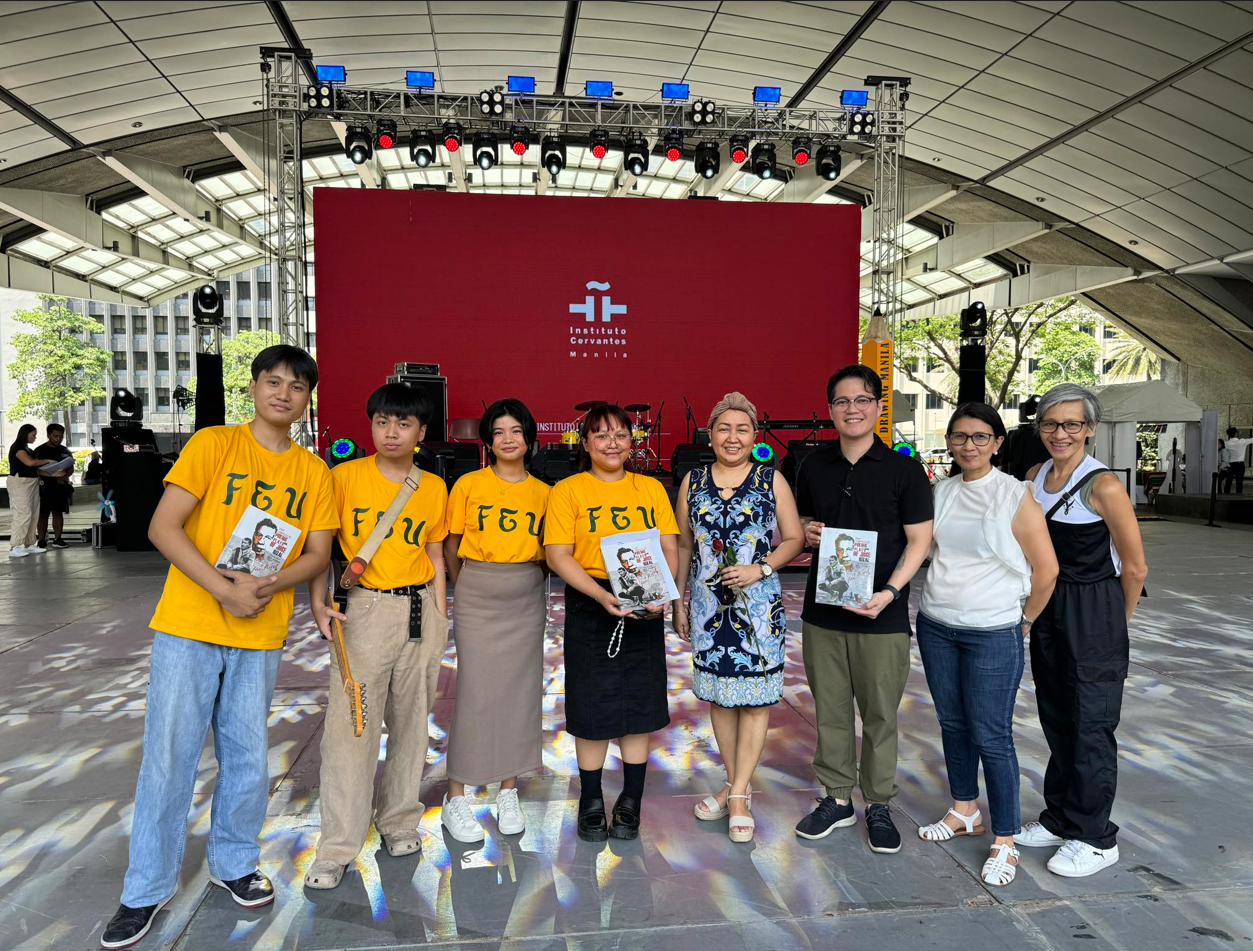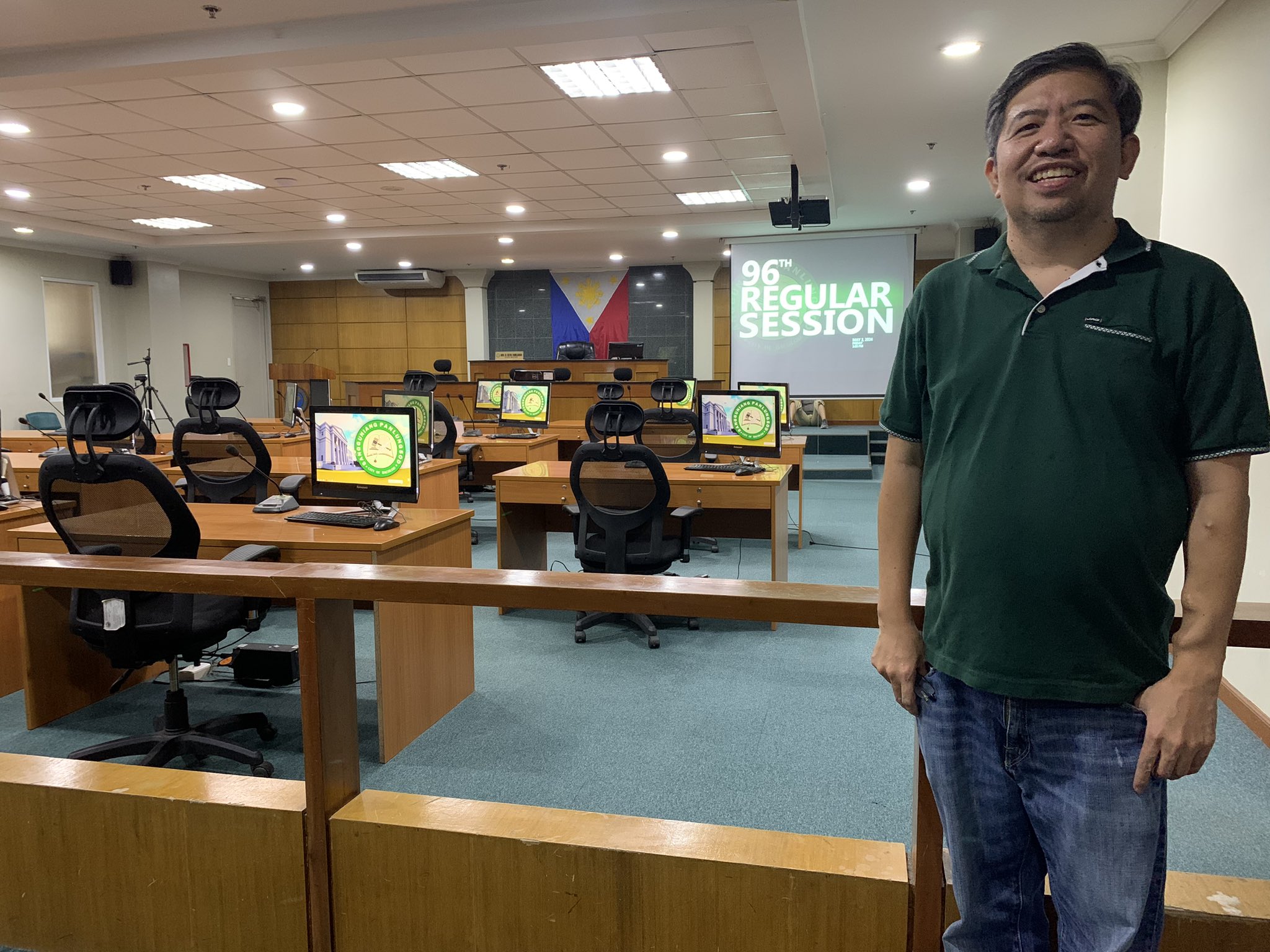“No island, no people should ever be forgotten.”
Far Eastern University recently screened the movie Amon Banwa sa Lawud (Our Island of Mangrove Moons) in the FEU Auditorium. The FEU Center for the Arts (FCA) undertook the project through its “FEUlikulahan and Kwentuhan Series,” with the support of the Institute of Arts and Sciences (IAS).
The event was well attended with an audience led by FEU Chair Aurelio R. Montinola III and the film’s director, Anton Juan. FEU students, teachers, and some external guests participated in the panel discussion and open forum after the film viewing.
Amon Banwa sa Lawud, co-produced by the Erehwon Center for the Arts and the Kellogg Institute for International Studies of Notre Dame University in the USA, tells the story of the locals of Suyac, Negros Occidental and their resistance to foreign threats on their livelihood and island life.
The film won the Best International Feature category at Louth International Film Festival 2023 and at the Golden Ribbon International Film Festival 2023. It was one of the six finalists in the Narrative Feature category for the International Short Film and Feature Film Competition at the Cuzco Underground Cinema Festival 2023.
“It was a great honor to screen this very important modern indie film in our university. More than its undeniable artistic value, Anton’s film depicted a very serious social topic, and it puts that discussion on the world stage. Congratulations to Anton Juan for this amazing film,” said Montinola.
Juan was vocal about the main inspiration behind the film.
“We have this beautiful Filipino soul that always welcomes foreigners, but sadly it is being taken advantage of by dominant cultures and foreign powers. That’s why I said we should not forget our history,” said Juan during the panel discussion.
Historical revisionism, environmental protection and sovereignty are the central themes of Juan’s recent work.
“The film talked about the fear of the community, fear of endangering lives and marine ecosystem, fear of losing their livelihood. It is a very serious issue. Suyac is just a metaphor of the entire Philippines. It is also happening in other countries like Guyana, Puerto Rico. Most of the fish canning factories are now owned by [foreigners]. I am being political here but it cannot be helped since I am a political animal, artist. I do not separate my art from myself, as an artist. All of my works are towards political justice. I do not believe that an artist should be separated from his or her visions,” said Juan.
Community participation
Juan shared during the panel discussion that the film would not have been created without it owning the narratives of the community.
The community members of Suyac Island, who are considered by Juan as vulnerable and marginalized, were consulted about their narratives and thoughts on the ongoing maritime issues in the country. Stories were unearthed through series of consultations and community immersion. These inspired the storytelling of the entire film.
“The actors were not trained actors. They are from communities throughout Negros, from Sagay, Suyac, and…from Bacolod,” said Juan.
Robert John P. Pastera, from FEU’s Department of Language and Literature, acknowledged the importance of community consultation in telling their stories in mainstream media.
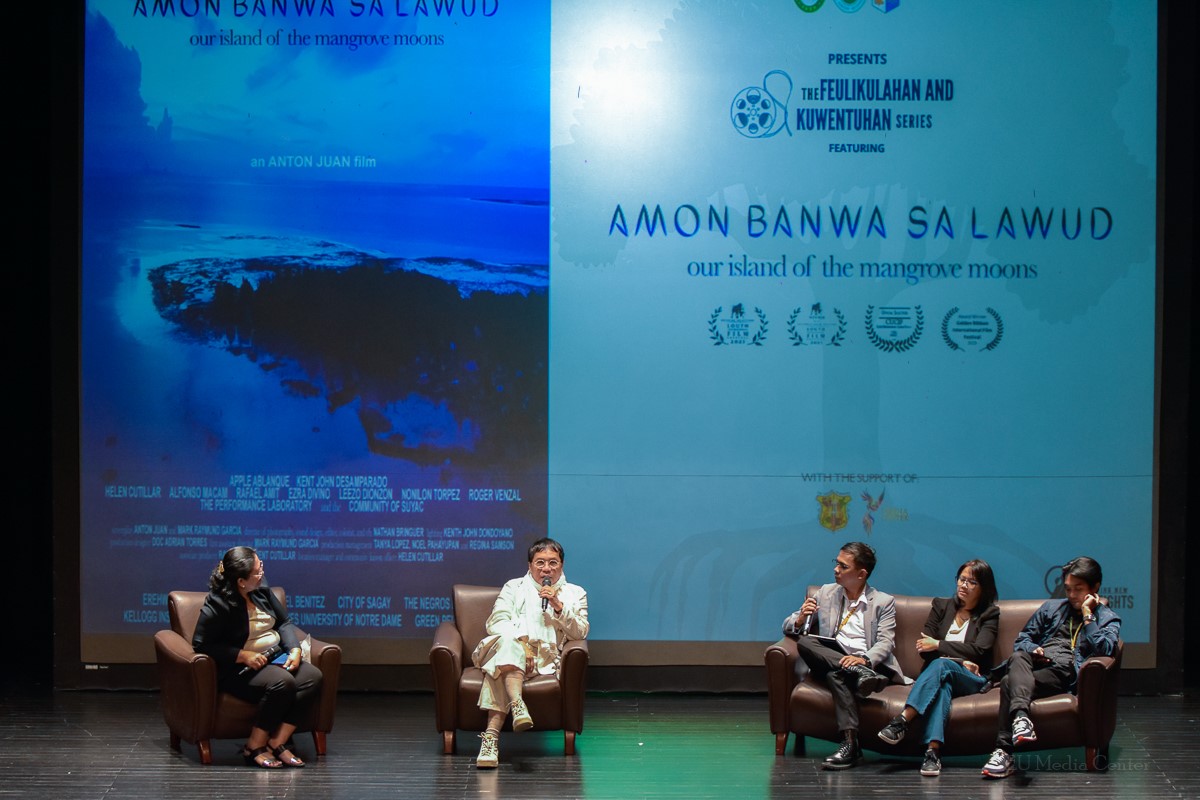
“It is a great idea to include community consultation. Under the 2003 UNESCO Convention for Safeguarding Intangible Cultural Heritage, for you to safeguard a specific heritage of a community, you first need to understand that they shape their own history, identity, social dynamics, world view and even their environmental system,” said Pastera.
The film is also successful in incorporating local language and culture in its story. Pastera mentioned how much he appreciates the inclusion of mythology in conversations and scenes of the story, which, in turn, enriched its already rich storytelling.
“I really like how you added local mythology in this movie. As a literature teacher, it is something I appreciate. [The] belief in bad luck is something present across all regions of the country. You somewhat merged mythology with science. In local cultures, the presence of fireflies is an indicator of the presence of engkanto (mythical creatures) but in science, it is a bio-indicator of a rich ecosystem,” said Pastera, addressing Juan.
One of the audience, Dr. Michael M. Coroza of the Ateneo de Manila University’s Filipino Department, applauded the use of Hiligaynon, the local language in Negros Occidental in the entire movie’s dialogues.
“As a native speaker of Hiligaynon, I want to thank you for using this language as you showed its beauty. You reminded us that our local languages are not enemies of each other; they seem different but they are all connected. Especially the last part of the movie, the use of language as a poetic device that evoked emotions and demanded reactions from your audiences,” Coroza told Juan.
Symbolisms
“I appreciate that you veered away from the use of technology in storytelling. Most [movies] nowadays use cellphones or technology in scenes. You had one cellphone in the entire film, an analog one, [which] goes to show that life progresses even without technology. It is a good message for our younger audiences,” said Chrissy Cruz Ustaris of FEU’s Department of Communication.
Aside from its themes, Juan used several symbolisms in his storytelling. Ustaris emphasized a subtle message of living a simpler life, images of success, and the importance of human connections in the film.
She commented on the malasakit (care) of movie characters towards their island, environment, and fellow community members.
“It is refreshing to see that a community can really be concerned and engaged with each other. Everyone cares about each other. They cherish peace and it is important to them,” she added.
Success is also symbolized through images of family relationships. The movie depicts success differently from what most people know.
“Here in the city [Metro Manila] our definition of success is having a car, house and expensive things, but for them it is having a complete family, [and] fruitful community relationships. The movie showed both definitions of success. You had a character who wanted to go to the city to experience a different kind of success and then the locals who stayed, who valued peace and normal island life,” said Ustaris.
Glenn Cedrick Gamus of FEU’s Department of Biological Science commented on the use of environment and local environmental knowledge in the movie.
“From a biologist’s perspective, you featured the mangroves and the seascapes beautifully. Thank you for that,” exclaimed Gamus.
When asked on his relationship with nature, Juan shared that he has travelled extensively but Suyac Island is his personal favorite. This personal adoration to the island motivated him to feature its natural beauty for people to appreciate. when appreciated, people will feel the urge to protect and conserve it.
“I did not use special effects here. You know the scenes with the moon? Those were all real. The reflections of the moon on the waters? They are all real. When I first went there, I immediately told myself that I would make a movie about this place. I want the mangroves to tell their own stories,” shared Juan.
FEU’s own take
The university has an ongoing extension service in a mangrove site at Calatagan, Batangas, where the university is continuously helping local communities with their ecotourism projects and plans. Focusing on empowering community members, FEU introduces livelihood projects among the league of local women and helps them in leading their cooperative.
